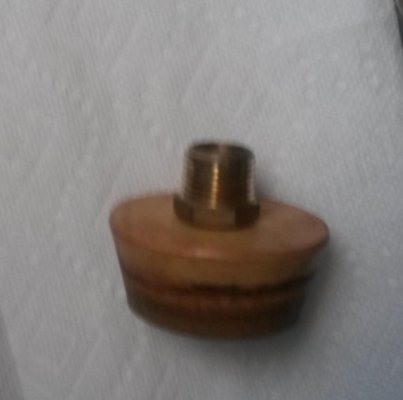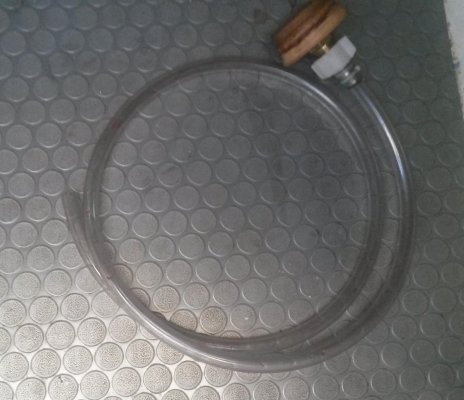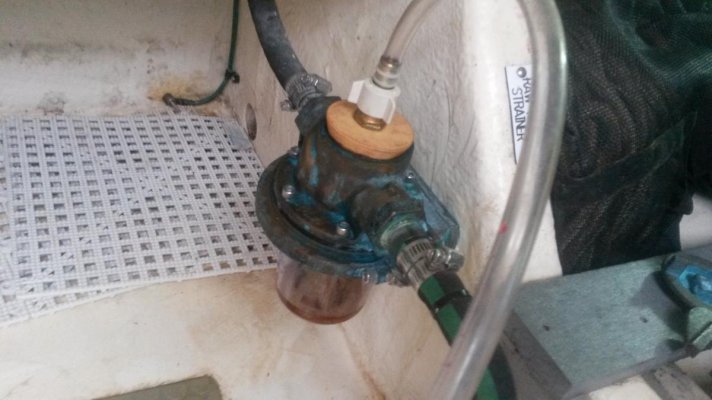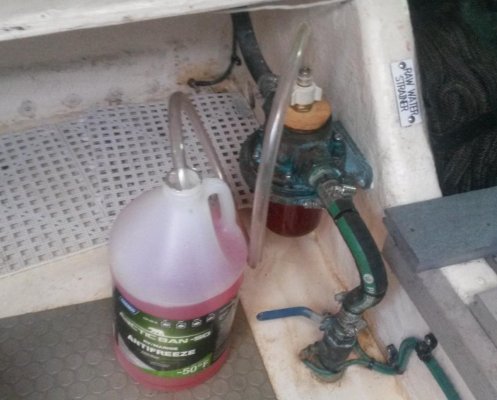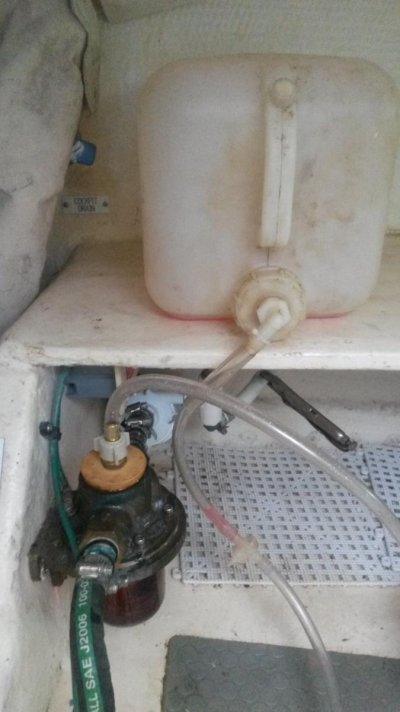Hose barbs doing their jobs...by design.
...also many other times for whatever reason a hose is needed to taken off a barb but is absolutely frozen on and cannot be removed without cutting the hose...can something be done, like lubricating, before a hose is installed to make it possible to be removed or is there some magical solution that I do not know about for removing a stuck hose besides a screwdriver?
Short answer, no.
If you are having the same problem as many of us, you will notice that the edges of the barbs on your metal raw-water hose fittings and other seacocks are
very sharp. No amount of grease or any lubricant is going to prevent those sharp-edged barbs from grabbing your rubber hose and holding it tight. You've already noticed that twisting the hose on the barb to break it loose does absolutely nothing. It's the barbs doing exactly what they were designed to do, pretty much the same principle as the barb on a fish-hook. If anything, lubricating will only make them cut in and grip even better.
Generally, these fittings are near or below the waterline, so this is a safety feature.
The answer is...don't do it. Each time you remove a hose from one of these barbed fittings (with a screwdriver, as you mentioned), you are stretching and damaging the hose (which is reinforced with cord, like a tire). These connections are not meant to be disassembled regularly.
Now...If you are draining the raw-water system carefully and completely, there really is no reason to put anti-freeze in there anyway. No manufacturer I have ever encountered recommends this. You already have antifreeze in your engine block (due to your closed cooling system), but be sure you've checked it with a hygrometer to ensure the freeze point is high enough for your area.
Make sure the drain-cocks are clear. Use a coat-hanger or stiff wire to go up through them to ensure they are drained. Obviously this is expecially critical with your heat exchangers.
Now...most manufacturers
will recommend that you to remove the cover from the raw-water pump impeller housing. Good idea at this time to also remove the impeller, inspect it and set it aside for the winter. Impellers can take a 'set' when left for long periods of time with the vanes compressed.
If you REALLY want antifreeze in your raw-water system, after draining you could inject your antifreeze into the heat-exchanger via the zinc anode port -- I would think you would be pulling the anodes during winterization anyway, at least for inspection. Then...it should be very simple to make a hose fitting, screw it into the anode port, and use a couple of feet of hose and a funnel to ensure your antifreeze is flowing properly and flushing through the system. You would then see antifreeze running out of the water-pump impeller housing, this is ok. A little antifreeze in the bilge during winter is good.
In any case, you should ALWAYS drain the system first and NEVER rely solely on the raw-water pump to inject antifreeze into a 'wet' system. Unless you know exactly how much water is in there, you won't know your dilution ratio.
Same is true for your lift mufflers (assuming you have them). These must be DRAINED first, because they can hold a lot of raw water. I know this from painful personal experience -- previous owner of our 4788 tried to do a 'shortcut' winterization. Anti-freeze in one of the lift mufflers was too diluted. Froze and cracked the muffler, and it was leaking into the bilge.
Not a fun repair, trust me.

